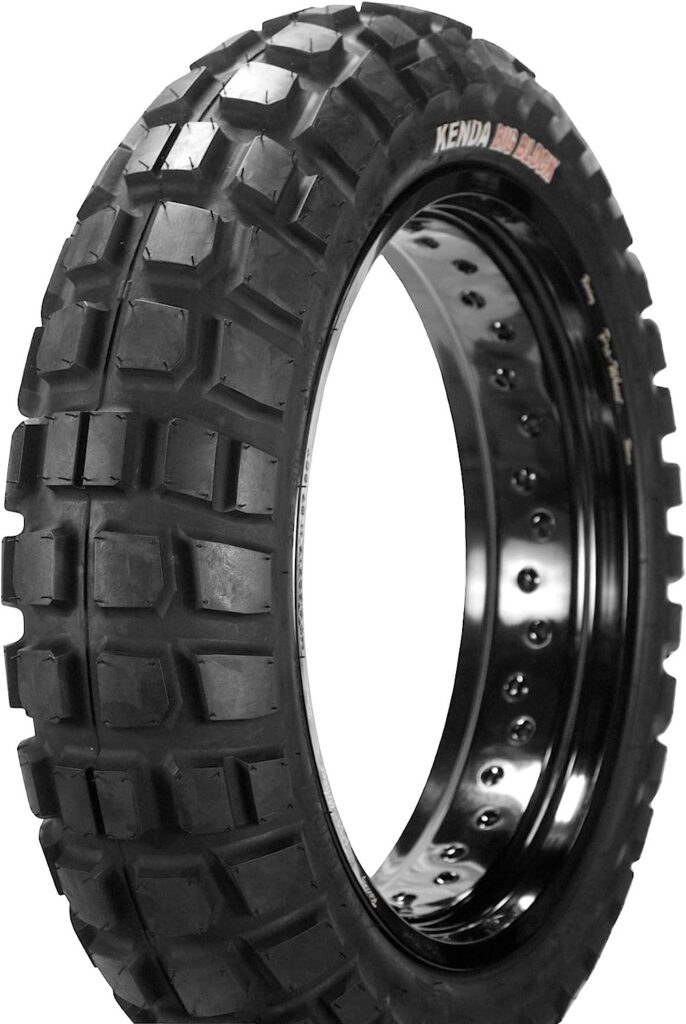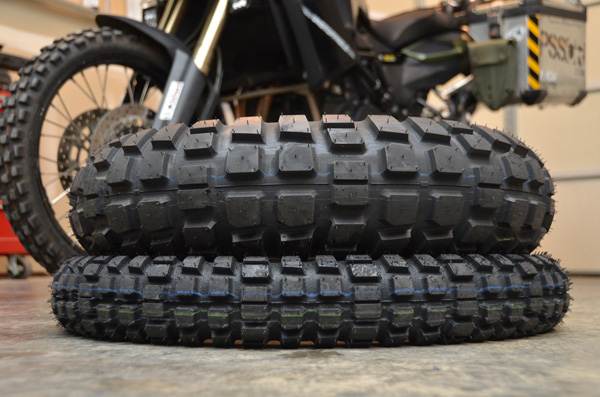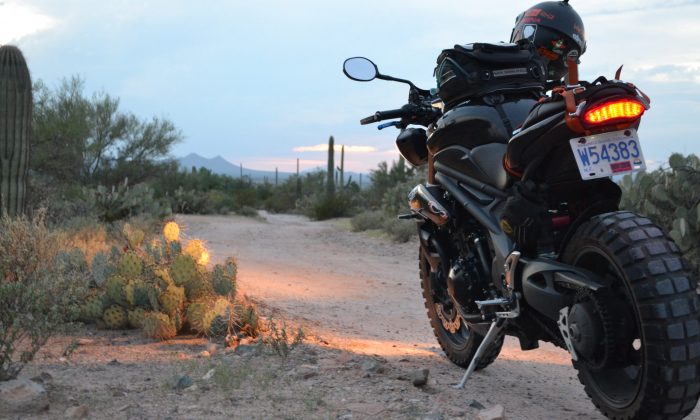Understanding the Nuances of Dual-Sport Tires
For anyone venturing into the world of biking, it becomes immediately evident how essential the right tire choice is. Tires can dramatically influence your biking experience, with some choices excelling in specific conditions while others might leave you desiring more. Currently, my bike is equipped with the Kenda rear tire. However, my recent experiences have left me somewhat discontented with its performance. Particularly, I associate a few mishaps that occurred during the first segment of my ride to this tire.
It didn’t live up to the expectations I had, especially considering the nature of dual-sport tires.
Dual-Sport Tires: The Balance of Street and Off-Road
When diving into the world of dual-sport tires, one often encounters the balance between street and non-pavement performance. At a glance, it might seem like a binary distinction. However, this is far from the truth. Navigating this balance isn’t always straightforward, as there are numerous factors and subcategories to consider that fall into these broader categories. Let’s delve deeper and unravel the intricacies of dual-sport tire surfaces.
The Three Subcategories of Dual-Sport Tires
In evaluating dual-sport tires, I find it essential to break down surfaces into three distinct subcategories. My background in motocross heavily influences this classification. These subcategories provide a clearer understanding of where a particular tire might excel and where it might falter. Let’s explore each in detail:
1. Hard Surfaces
When referring to hard surfaces, I’m mainly pointing towards pavements or hard pan surfaces. A hard pan surface typically consists of gravel and dirt that has been heavily compacted. Such a surface offers substantial hardness, ensuring that riders should ideally have decent traction. It’s also worth noting that these hard surfaces can sometimes be quite rough, which was evident during my ride across the trans-Florida trail. Despite the hard pan surface, I experienced a sudden loss of traction with the rear tire, leading to an unexpected wipeout.
2. Intermediate Surfaces
Intermediate surfaces strike a balance between the extremes. These can be defined as gravels or dirt that aren’t too compacted or too loose.
Riders can generally find a decent amount of traction on such surfaces, making them a common terrain type for many.
3. Soft Surfaces
The third category, soft surfaces, primarily encompasses terrains like sand and mud. These terrains pose a unique challenge to riders due to their loose nature, requiring tires specifically designed to handle such conditions to ensure optimal performance.
As one traverses different terrains, the importance of understanding these subcategories becomes increasingly evident. It not only aids in making an informed tire choice but also prepares riders for the challenges they might face on their journey.
Decoding Dual-Sport Tires: The Expectations vs. Reality
When diving into the realm of dual-sport tires, certain expectations arise. Tires are segmented based on their adaptability to different terrains. Specifically, they’re divided into hard surfaces, intermediate surfaces, and soft surfaces. Let’s delve into what these entail and the experience with one specific tire: the Kenda K784 Big Block.
Defining Terrain Categories
Every biker familiar with dual-sport tires knows the three primary terrains: hard, intermediate, and soft. The expectation from a 50-50 dual-sport tire, which promises equal proficiency on-road and off-road, is high.
While it may not be perfect, I anticipate it to excel on hard surfaces. On pavements, its performance should nearly mirror that of a dedicated street tire. When it comes to intermediate terrains like loose gravel and dirt, one would expect decent performance, leaning on the rider’s skills to navigate. Soft terrains, such as sand and mud, are indeed challenging; the tire’s performance here greatly depends on the rider’s skill. Living in Florida has equipped me with the expertise to tackle these terrains, although I would have preferred the tenacity of a 90-10 tire. But choices were made, leading to the selection of the Kenda K784 Big Block for my KLR 650.
Tire Durability: A Glimpse into the Kenda K784’s Wear and Tear
Before diving deep into the specifics of the Kenda K784’s performance, let’s discuss its durability.
All terrains impact tire wear differently. Naturally, a tire will wear out faster on hard terrains like pavements than on softer ones. With 1,575 miles clocked on this tire, I’ve observed a tread decline to around 40% of its original. Originally boasting an 11mm tread depth, it’s now hovering around 4-5mm in some spots. This rapid wear underscores a fundamental truth about knobby tires like the Big Block – they have relatively short lifespans. You cannot reduce their tread to minimal levels as you can with other tires. Once it reaches about 50% of its original depth, it’s pretty much spent. Regrettably, the K784’s tread didn’t last as long as I’d hoped.
The Kenda K784 Big Block: Unraveling the Pros and Cons
Opinions on tires can be polarized. The Kenda K784 Big Block has had its share of mixed reviews. Starting with the negatives, tread wear is a common grievance among users.
However, it’s not unique to this tire; even my favorite 40-60 dual-sport tire, the Conti, exhibits rapid tread wear. Despite its shortcomings, there’s something endearing about it. Turning our attention back to the Kenda Big Block, this tire leaves much to be desired in specific categories. On hard and hard pan terrains, especially when wet, the tire’s performance is alarming, bordering on hazardous. It demands caution and adept handling from the rider. Even on dry surfaces, this tire falters, offering subpar grip and stability. This glaring weakness is something every potential buyer should consider.
Understanding the Kenda K784’s Grip Issues on Hard Surfaces
The wear and tear of a tire can greatly affect its performance, and this holds especially true for the Kenda K784 Big Block. After experiencing just a mere 10% of its wear, I noticed a significant shift in the tire’s compound. This alteration drastically reduced its ability to firmly grip pavements or hard pan surfaces, especially those with inherent roughness for traction. This lapse in grip was the root cause of an unfortunate wipeout I experienced. Contrary to how it might have looked to onlookers, I wasn’t speeding. In fact, about 20 bikers had passed through the same spot before me and around 50 after, with none experiencing the same issue. The rear end of my bike was the primary culprit. In that split second, my only wish was to somehow maintain balance and prevent a fall, but alas, I couldn’t. This incident exemplifies the primary issue I’ve encountered with this tire on hard terrains.
To shed more light on the grip issue, consider this typical scenario: you approach an intersection, stop at a red light, and intend to make a right turn.
Even when you apply a reasonable amount of throttle – nothing excessive – the tire spins out. I’ve experienced this numerous times, and it’s simply absurd. The tire fails to maintain a firm grip on the pavement, making basic maneuvers unexpectedly challenging.
The Intermediate Terrain Challenge
Moving on to intermediate terrains, which primarily comprise gravel and dirt roads, the Kenda K784’s performance remains underwhelming. One would expect a knobby tire like this to handle such surfaces reasonably well. However, when seated in the saddle, traversing a dirt road with, say, an inch-deep layer of semi-solid dirt, the experience feels akin to riding an 80/20 street tire. Maintaining a straight line becomes a daunting task.
Oddly, the front tire isn’t the issue here. Instead, the rear tire exhibits an unsettling ‘wishy-washy’ behavior. This erratic motion is so pronounced that one might stop to check if they’ve had a flat tire. It eerily mirrors the sensation of riding on a deflated tire, especially on gravel or dirt roads. Some might argue that such instability is expected on loose terrains, but I beg to differ. With five decades of biking under my belt, attending numerous rallies each year across diverse conditions, I’ve garnered a fair amount of experience. While I don’t claim expertise, I can confidently discern when a tire isn’t responding appropriately to a surface. The Kenda K784, in these instances, sadly disappoints.
Performance of the Kenda K784 Big Block in Soft Terrains
Having already delved deep into the tire’s performance on hard and intermediate terrains, we now venture into softer grounds – primarily sand and mud.
With subpar performances on harder surfaces and noticeable difficulties on intermediate ones, how does the Kenda K784 fare on softer terrains?
It’s essential to understand that critiquing a 50/50 tire’s performance on sand and mud is somewhat tricky. This tire type isn’t primarily designed for such terrains. However, with the Kenda K784 Big Block, its performance on sand and mud was comparable to other 50/50 tires I’ve experienced. But here’s the catch: riders typically don’t opt for these tires intending to primarily navigate sandy or muddy terrains. They’re more interested in its prowess on harder and intermediate grounds, willing to compromise a bit when occasionally encountering softer terrains. This compromise was evident during my 1,575-mile journey with the Kenda K784, which was riddled with numerous challenges, including an unfortunate fall.
Reviews and Feedback from the Biking Community
It’s always wise to supplement personal experiences with collective feedback. On scouting various reviews, including a notable one from Adventure Pulse on YouTube, a pattern emerges. Many shared my sentiment. While the tire might have a visually appealing design, aesthetics quickly lose importance once out on the trails. What riders need is reliable performance, which, according to many, the Kenda K784 Big Block unfortunately lacks.
Final Thoughts: Kenda K784 Big Block’s Overall Score
Summarizing my experience and echoing the sentiments of numerous other bikers, on a scale from one to ten, the Kenda K784 Big Block barely makes it to three. This score might seem harsh, but it’s a reflection of its consistent underperformance across various terrains. Its redeeming quality? As Adventure Pulse pointed out, it does look like a good tire. But when it comes to actual utility, it falls woefully short.
Conclusion
In the vast realm of biking, the right tire can make a world of difference. While the Kenda K784 Big Block might initially seem like an attractive option, my experience suggests that riders approach with caution. Ensure you delve deep into reviews, assess its fit for your specific needs, and remember that while aesthetics are a bonus, performance is paramount. As for me, the K784 will soon find its place in the recycle pile at my local dealer. I remain undecided about my next tire choice, but I’m leaning towards the 50/50 or 40/60 range. Meanwhile, I’ll be sidelining the KLR 604 for a bit, shifting my focus to the KLX 215 for upcoming rallies.







